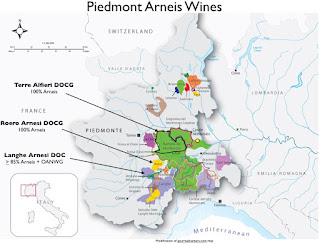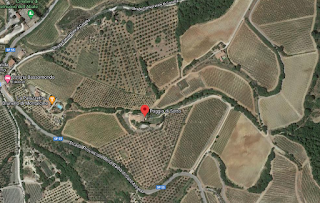Gianfranco Soldera died on February 6, 2019.
Gianfranco Soldera was notoriously curmudgeonly; did not brook fools gladly; did not make friends easily; preferred not to take visits from, or sell his wine to, people who did not share his philosophy on wines and winemaking; and made one of the most coveted and treasured wines in the world. Known almost as much for the quality of his wines, as for the case where a disgruntled former employee opened valves allowing six vintages of his maturing wines to flood the floors of his cellars, Soldera famously accused his fellow winemakers of seeking to perpetrate a fraud when they offered to provide him wines to mitigate his loss. He indicated that he would resign from the Consorzio in 2015 but the Consorzio was deeply miffed and voted to oust him immediately; and then sued him for gross libel.
Soldera made his money in the insurance business and decided to use his resources to buy a property to grow winegrapes. He looked first in Piemonte because he was enamored with the great producers and their wines. But his efforts there were unsuccessful so he turned to Montalcino. He saw the badly neglected, 24-ha estate in June of 1972 and bought it the following month.
The map immediately below shows the location of the plot. The one following shows the characteristics of the region wherein the property is located while the third in the series is a birds-eye view of the property.
 |
| Source: http://www.aries-wineny.com/ |
 |
Red indicates the Soldera location
|
According to Italian Wine Merchants (IWM), Soldera planted two small plots -- Case Basse (2 ha) and Intistieti (4.5 ha) -- to Sangiovese between 1972 and 1973, Sangiovese being the only grape, he believed, "that possessed a genuine synergy with the land." The Soldera grape-growing architecture is graphically illustrated in the chart below.
IWM states that Soldera drew exclusively on the Intistieti vineyard for early wines because its poorer soils delivered wines with structure. Antonio Galloni believes that Intistieti is the better vineyard because it produces more powerful tannic wines while Case Basse produces more feminine wines with silky tannins.
The first wines yielded from the young vines in 1975 were produced as a Vino da Tavola Rosso, a precursor of today's Rosso di Montalcino.
Soldera wines are made in the most natural way possible. Galloni see the farming techniques as biodynamic but Soldera did not seek certification as such. Vineyard yields are curtailed by short pruning in the winter, green pruning in the summer, and grape- and leaf-thinning in the fall.
The wines are made in the same manner as a Monfortino: natural fermentation in Slavonian oak vats; long maceration on skins; and long aging. Fermentations are not temperature-controlled and cap management is via pumpovers.
Each of the large casks is bottled separately, a practice that Galloni is uncomfortable with because it will yield bottle variation (based on source cask). It also goes against the winemaking grain of post-maturation blending in order to provide consistency across bottles and the best overall representation of the estate's offering.
A driving force for Soldera is the fact that the wines age well. The Soldera wine is aged up to 5 years in large Slavonian oak casks and is then held in bottle for several months for further maturation. The Riserva is aged for an additional year. In certain vintages shorter-matured wine, labeled either Intistieti or Pegasos, are produced.
The timeline below shows the labels that have been produced at the estate since its inception.
Tasting Soldera Wines
I have been a big fan of Soldera's wines through the years but my most comprehensive tasting was at a Galloni Soldera tasting held at maze, the Gordon Ramsey restaurant resident at the Marriott Grovesnor Square in London's Mayfair district.
The tasting was organized into five thematic flights with the intent of allowing attendees to "trace the evolution of the wines and house styles all the way back to 1981." The flights were named and ordered as shown in the table below.
Flight
| Nomenclature
| Inclusive Vintages
|
1 | The Early Years
| 1981, 1982, 1987, 1988
|
2 | Sleeper Vintages
| 2000 Riserva, 2003 Riserva, 2005 Riserva
|
3 | The Mid-1990s
| 1993 Riserva, 1994 Riserva, 19995 Riserva, 1996 Riserva
|
4 | Reference Points
| 1997 Riserva, 1999 Riserva, 2001 Riserva, 2004 Riserva
|
5 | The Icons
| 1993 (Magnum), 1983 Riserva (Magnum), 1990 Riserva, 2006 Riserva
|
The Early YearsWith the first Soldera wine being produced in 1975, the formative vintages are curated in this flight. The 1
981 Soldera had a balsamic character, ripe fruit, leather, cigar, baked fruit compote, spices, dried herbs, and coriander on the nose. Bright red fruit on the palate along with orange peel. Full round mouthfeel. Citrus character becomes more apparent as wine evolves in the glass. The
1982 Soldera showed granny's attic, mushroom, forest floor, leather, and a slight portiness. Balsamic character on the palate along with red cherries, dried herbs, and bright acidity. A long sour finish. The
1987 Soldera was riddled with VA. Roughness and phenolics on the nose. Other characteristics masked by the VA. The
1988 Soldera had red berry, dried rose petals, coffee, and chocolate notes. Savory. Even distribution on the palate with dried herbs and a savoriness. Rustic but balanced. Long, sour finish.
Sleeper VintagesThe 2
000 Riserva had a rich nose which took a while to assert itself. Balsamic notes along with spice, dried herbs, and red fruit. Balanced on the palate with an elegant fruit/spice finish. Plum, dried herbs, and savoriness on the nose for the
2003 Riserva. On the palate ripe cherry, plum, licorice, and spice. The
2005 Riserva showed dark fruit, spice, and a hint of nail polish. Bark and intense dark fruit accompany a slight medicinal quality. Long, spicy finish.
The Mid-1990s
The 1993 had a balsamic note along with earth and a slight portiness. Core of bright, fresh red fruit which explodes on the palate. Silky tannins. Balanced with a drying sour finish. The 1994 Soldera had a lifted nose, rose petals, tar, black cherries, and herbs. Richness on the palate. Spice. Beautiful, flowing finish. The 1995 Soldera had a nose reminiscent of a Penfolds Grange with sweet baking spices, grated coconut, and a layered complexity. Hint of sweetness on palate. Balanced. Lengthy finish. The 1996 Riserva showed dark berries, earth, licorice, and rusty rose petals. Black cherry and chocolate on the palate. Hint of sweetness. Layered. A 1995 Intietsti was slipped into the tasting mix at this point. Rich red fruit, herbs, phenolics, green bark, and a hint of rosemary on the nose. Savory. Excellent balance. Spicy finish.
Reference Points
The 1997 Riserva had black cherries on the nose, rust, herb and spice. Bigger on the palate both in terms of fruit and acid. Tamarind. Leather. Balanced high. The 1999 was a more structured wine than the 1997. Tar and dark fruit. Spice. Brooding. Powerful. Ripe tannins. Lengthy anise finish. The 2001 Riserva had an intense spiciness. Unctuous with tar and anise. Bright acidity with tamarind notes on palate. Rustic. Balanced. Weighty on palate with a long, sour finish. The 2004 vintage was cooler, with a later harvest and long growing season. According to Antonio, the hallmark of the vintage is incredible aromatics. On the nose, dried rose petals, sour cherries, and an oily richness. Sour cherries carry through to a complex, layered palate-feel. Silky tannins. Balanced with a rustic finish.
The Icons
The 1983 would have been made from the Intietsti vineyard with the non-Riserva made in stainless steel and the Riserva in Oak. The 1983 and the 1983 Riserva both had prominent tamarind/sour cherry characteristics. The 1983 had dried herbs, earth, rose petals, dark fruit compote, spice, and a hint of phenolics on the nose. Clean palate. The first 1983 Riserva was corked and was replaced. Earth and forest floor, herbs, rose petals, and a rusticity. Rich. Intense. Lengthy finish. The 1990 Riserva exhibited tar, rose, anise, cedar, and spice on the nose. High-toned fruit. Sharp acidity. Beautiful on the palate with a long, elegant, toffee finish. This was the first year that Soldera made a Brunello from both his vineyards. The 2006 Riserva has a pungency on the nose with blue fruit, tree sap, and a hint of VA. Sour tamarind on palate. Lengthy, acidity-enabled finish.
Following are some of the wines that I have tasted that were not a part of the Galloni tasting.
First, four an Italian knight at a local Orlando-area restaurant, we tasted the 2002 and the 2006 Soldera. The 2002 showed dark and red cherries on the nose along with a florality. Elegant. Earth and dark fruit on the palate. Lengthy finish.
For a lunch at the Capital Grille, we tasted a number of wines to include the 2009 Soldera. This wine opened with a cornucopia of scents to include sugar cane, sweet ripe black fruit, licorice, rhubarb, and balsamic. Settled down after a while to an elegant tar and licorice. Complex, multi-layered, and beautifully balanced.
The 2004 Soldera showed violets, rose petal rust, talcum powder, and tobacco on the nose. Perfect weight on the palate. Elegance. Balanced. Lengthy, smoky finish.
The Soldera Pegasos 2005 showed red fruit, earth, mushrooms, and leather on the nose, red fruit earth, and silky tannins on the palate. Reasonable length on the finish.
********************************************************************************************************
Soldera wines provide high quality across the board and are basically variations on a theme. Even in the years when vintage effects significantly affect the quality of his competitors' products, Soldera managed to produce wines that are clearly recognizable as his.
Gianfranco created a persona and a product that were larger than life. He was overbearing but his wines were not. The question that we now have to face is the transferability of his ideas and practices. Will Soldera wines evolve and flourish along the path created by Gianfranco or will his passing flatten its trajectory? My hope is for the former.
©Wine --
Mise en abyme



















































